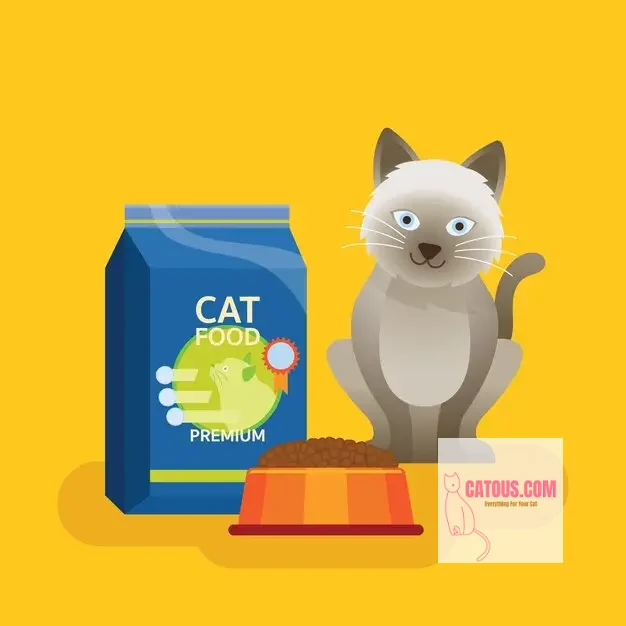Views: 4
Interactive Feeding dish: Enhancing Mealtime Engagement for Your Feline Friend
Discover the joy of interactive cat feeders, innovative tools that make mealtime more engaging and fulfilling for your beloved feline companion.
Welcome to the world of interactive Feeding dish, where mealtime becomes a stimulating and exciting experience for your feline friend. As natural hunters, cats have an instinctual desire to engage in activities that challenge their minds and bodies. Interactive feeders offer a solution to the mundane routine of simply placing food in a bowl, providing mental stimulation, slowing down eating habits, and encouraging natural foraging behaviors. Let’s explore the benefits of interactive cat feeders and how they can enhance your cat’s mealtime experience.

Table of Contents
- Benefits of Interactive Cat Feeders
- Types of Interactive Cat Feeders
- Puzzle Feeders
- Slow Feeders
- Food Dispensing Toys
Benefits of Interactive Cat Feeders
Interactive Feeding dish offer numerous advantages that go beyond simple mealtime routines. By incorporating these feeders into your cat’s daily life, you can provide mental and physical stimulation while promoting healthy eating habits. Consider the following benefits:
- Stimulation and Enrichment: Interactive feeders engage your cat’s natural instincts and keep them mentally stimulated, preventing boredom and behavior problems.
- Slow Feeding: These feeders slow down your cat’s eating pace, reducing the risk of digestive issues such as vomiting or bloating.
- Weight Management: By extending mealtime and making it more challenging, interactive Feeding dish can help prevent overeating and maintain a healthy weight for your cat.
- Natural Foraging Behaviors: Interactive feeders mimic the hunting and foraging behaviors of cats in the wild, providing a more fulfilling and satisfying eating experience.
- Bonding and Playtime: Interacting with your cat during feeding sessions strengthens the bond between you and your feline companion, fostering trust and creating quality time together.
Types of Interactive Cat Feeders
There are various types of interactive cat feeders available, each designed to cater to different needs and preferences. Understanding the different types can help you choose the right one for your cat. Consider the following:
Puzzle Feeders
Puzzle feeders challenge your cat’s problem-solving skills, requiring them to work for their food. These feeders typically involve hiding food in compartments or puzzles that your cat must figure out to access the treats. Puzzle feeders encourage mental stimulation and slow down eating. Examples include:
- Maze-style feeders with hidden compartments
- Feeding balls with adjustable openings
- Interactive food puzzles with sliding panels or flaps
Slow Feeders
Slow feeders are designed to prevent cats from gobbling up their food too quickly. These feeders often have obstacles or patterns that require your cat to eat around them, promoting slower, more deliberate eating habits. Slow feeders can help prevent digestive issues and obesity. Examples include:
- Food bowls with raised ridges or mazes
- Dome-shaped feeders with openings
- Lick mats or mats with ridges to spread out food
Food Dispensing Toys
Food dispensing toys combine play and mealtime, providing mental and physical stimulation. These toys require your cat to interact with the toy to release small amounts of food at a time. Food dispensing toys simulate natural hunting behaviors and encourage active play. Examples include:
- Treat balls or cubes with openings
- Interactive toys with levers or buttons to dispense food
- Electronic toys that dispense food intermittently
Interactive Cat Feeders: Q&A
1. Can interactive cat feeders help with weight management?
Yes, interactive Feeding dish can be beneficial for weight management. By slowing down eating pace and providing mental stimulation, these feeders help prevent overeating and encourage cats to expend energy while obtaining their food.
2. Are interactive cat feeders suitable for all cats?
Most cats can benefit from interactive feeders. However, it’s important to consider your cat’s individual needs and preferences. Some cats may require an adjustment period or prefer a specific type of interactive feeder. Always monitor your cat during feeding to ensure they are using the feeder correctly.
3. How often should I use interactive cat feeders?
Interactive cat feeders can be used for every
meal or as a supplement to regular feeding routines. The frequency of use depends on your cat’s needs and preferences. Start by incorporating them gradually and observe how your cat responds.
4. Can interactive feeders help reduce behavioral issues in cats?
Yes, interactive feeders can help reduce behavioral issues by providing mental stimulation and an outlet for natural hunting and foraging behaviors. They can help alleviate boredom, destructive behaviors, and excessive vocalization caused by pent-up energy.
5. How do I introduce my cat to an interactive feeder?
Introduce your cat to an interactive feeder gradually. Begin by placing a small amount of their regular food or treats in the feeder and allow them to explore and discover the food on their own. Provide positive reinforcement and encouragement during the learning process.
Conclusion
Interactive cat feeders offer a world of benefits for your feline companion, providing mental stimulation, promoting healthy eating habits, and fostering bonding moments. Whether you choose puzzle feeders, slow feeders, or food dispensing toys, incorporating interactive feeders into your cat’s mealtime routine can enhance their overall well-being and make feeding a fun and engaging experience. Embrace the joy of interactive cat feeders and watch your cat thrive both physically and emotionally.
